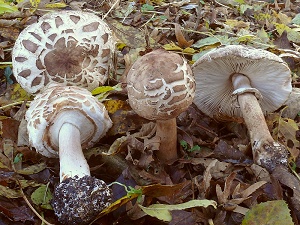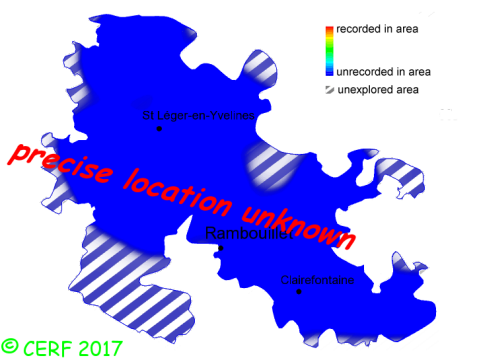| Chlorophyllum brunneum (Farl. & Burt) Vellinga |
|
|
|
|
|
|
The cap is reddish brown on a white background, hemispherical then convex to expanded; its margin is slightly toothed. The cap surface is scaly, not viscid nor sticky. The stem is smooth, without zebra-like markings, bulbous, with a mobile ring. The flesh is white, turning red when exposed to air; its taste is mild; the odour is pleasant; its texture is fibrous. The gills are white, free, crowded . The spore print is white. This species is saprophytic. It grows on the ground, in parks, gardens, on rich soils. The fruiting period takes place from July to November.
Chemical tests : none. Distinctive features : Cap disrupting into reddish-brown angular scales, turning yellow when touched; smooth, reddish stem, turning vinaceous red when touched, with a simple ring; in gardens or parks Chlorophyllum brunneum is rare and confined in the forest of Rambouillet, and is infrequent, more generally speaking . | ||
|
page updated on 14/01/18

